The days may be getting longer as the season heads into summer, but a sunset is coming where the estate tax exemption is concerned. You’re likely already talking with your clients about the changes scheduled to be triggered when January 1, 2026 rolls around. This is the date that the gift and estate tax exemption–the total amount a taxpayer can leave to family and other beneficiaries during their life and at death before the hefty federal gift and estate tax kicks in–is scheduled to drop, rather precipitously.
For 2024, the estate tax exemption is $13.61 million per individual, or $27.22 million per married couple, an increase over 2023 thanks to adjustments for inflation. Later this year, the IRS will issue inflation adjustments for 2025. For 2026, the exemption is scheduled to fall back to 2017 levels, adjusted for inflation, which would roughly total $7 million per person. That is quite a drop!
If your clients will be among the many high net-worth families impacted by this looming potential shift, start talking with them now about how charitable strategies might fit into a gifting plan to help offset the impact of the sunset.
For example, clients who are business owners could explore launching a gifting program to transfer shares of the business not only to heirs, but, taking advantage of the higher exemption, also to a donor-advised or other fund at the community foundation. The objective here would be to begin intentionally reducing the value of the client’s estate, assuming that the estate tax exemption will rise, while also executing a business transition plan that meets a client’s overall intentions regardless of the tax laws. (As with any gift of a hard-to-value asset, securing a qualified appraisal is essential, as is timing; shares can’t be gifted to a charity if a sale is effectively already in process. The IRS watches both very closely.)
Similarly, annual exclusion gifts ($18,000 per gifting spouse per recipient in 2024) to family members and other individuals can be an effective way to reduce the value of a taxable estate without eating into the lifetime gift and estate tax exemption.
Indeed, many philanthropic individuals use the annual exclusion technique as inspiration for their charitable gifts. Gifts to charities are deductible for gift and estate tax purposes (as well as for income tax purposes) and therefore also serve to reduce the value of a taxable estate without eating into the exemption. Some philanthropists report that they like the idea of making annual exclusion gifts to each family member and then using their donor-advised fund at the community foundation to make annual exclusion-amount gifts to each of the charities they support.
Don’t overlook estate plan updates for clients, either. Increasing a client’s bequests to a donor-advised can help blunt the impact of estate taxes. Amounts passing to a qualified charity, such as the Community Foundation for Northern Virginia, upon a client’s death are not subject to estate tax. This means the client’s charitable priorities will receive 100 cents on every dollar in the taxable portion of the estate, while the client’s family and other beneficiaries could receive 60 cents on the dollar–or even less.
As the end of 2025 gets closer, tax planning decisions get tougher. Should you recommend that your clients make aggressive moves now to activate gifts to family members? Or hold out to see if legislation intervenes to prevent the sunset? Planning decisions won’t get any easier anytime soon. But partnering with the Community Foundation for Northern Virginia is a great way to help you navigate the opportunities and pitfalls presented by changes in the tax law.
 Sarah Baker, CFP®, Senior Financial Planner at Mason Investment Advisory Service
Sarah Baker, CFP®, Senior Financial Planner at Mason Investment Advisory ServiceThe information contained in this article is provided for informational purposes only. It is not intended as legal, accounting, or financial planning advice.


 Questions?
Questions? Questions?
Questions?




